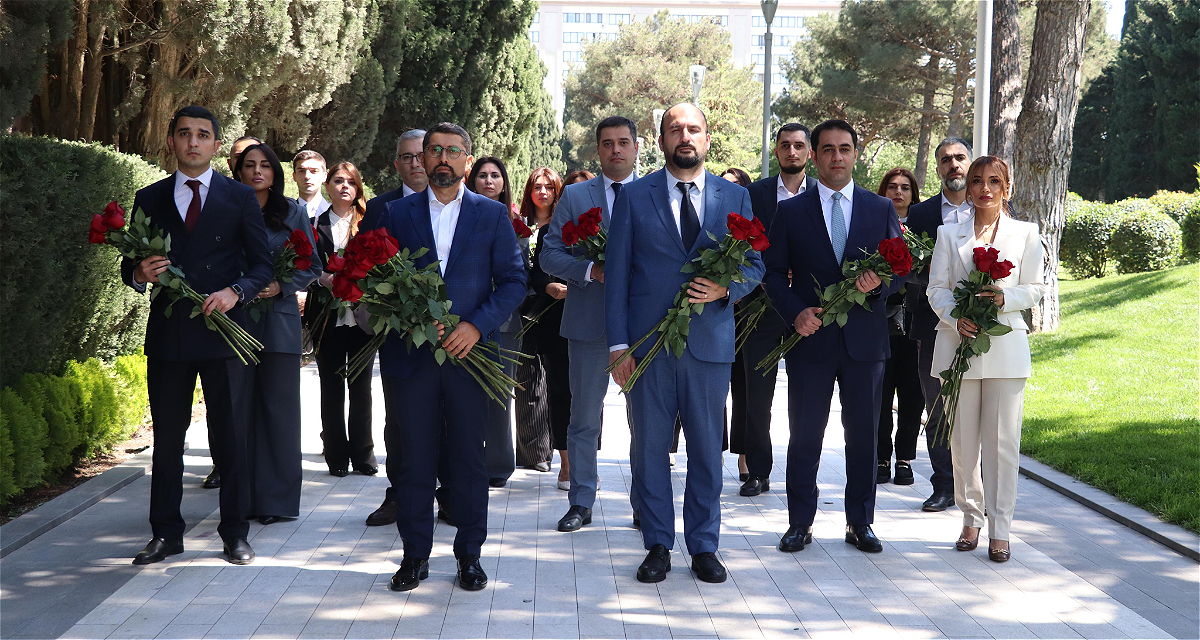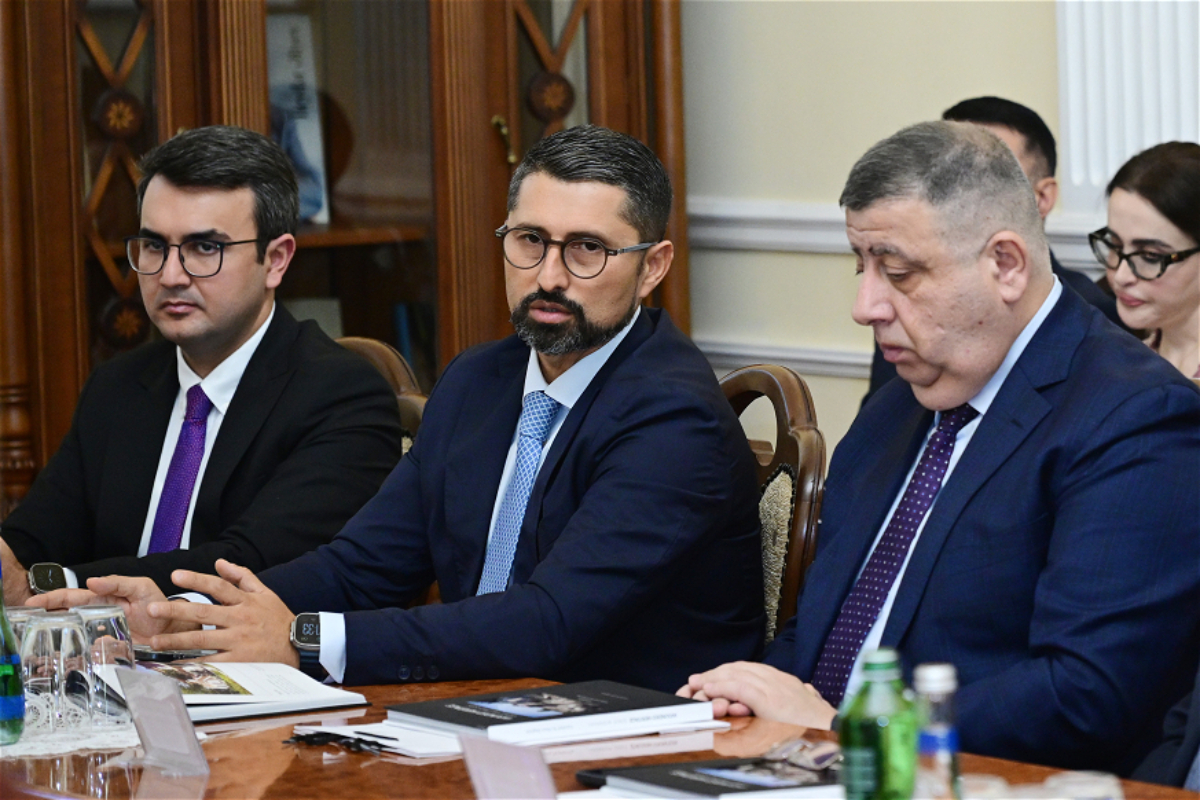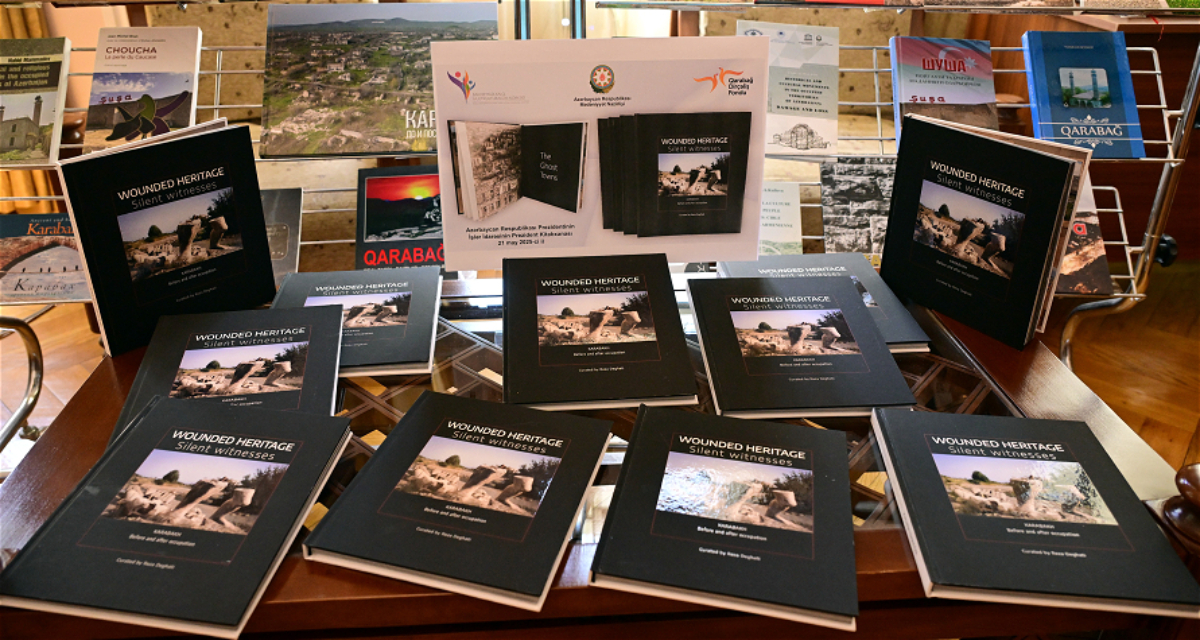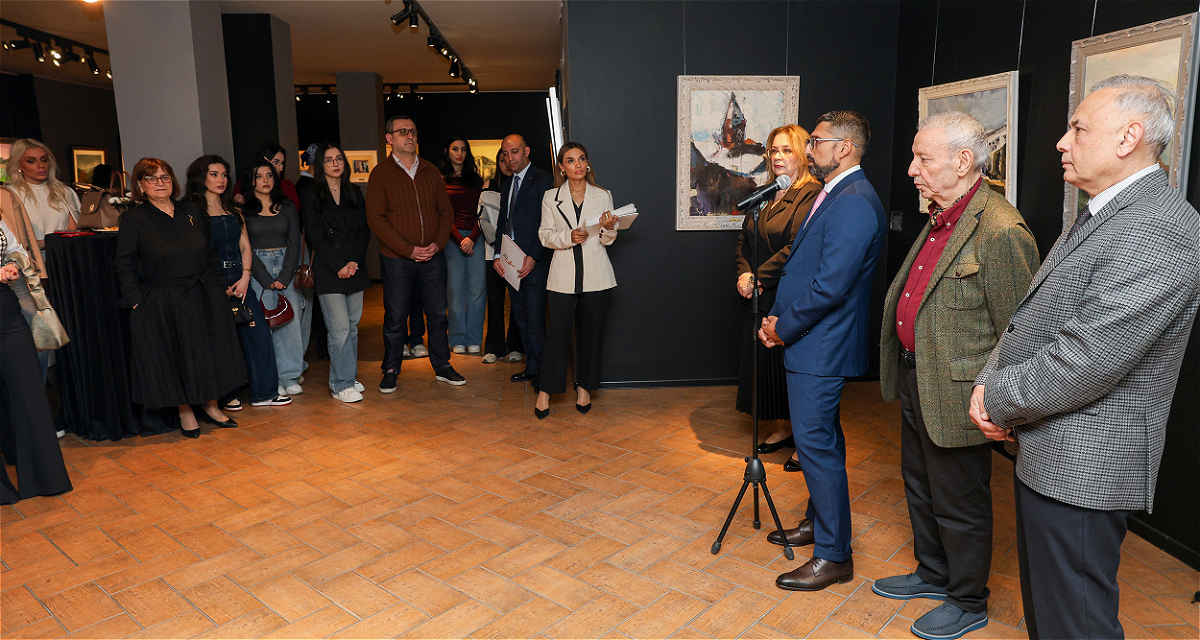 The collective of the Karabakh Revival Fund visited the grave of the National Leader Heydar Aliyev
The collective of the Karabakh Revival Fund visited the grave of the National Leader Heydar Aliyev

The presentation of the photo album “Wounded Heritage: Silent Witnesses”—a joint project by the Baku International Multiculturalism Center (BIMC), the Ministry of Culture, and the Karabakh Revival Fund—was held at the Presidential Library of the Administrative Department of the President of the Republic of Azerbaijan.
The event was attended by Kamal Abdulla, Chairman of the Board of Trustees of the Baku International Multiculturalism Center and academician; Rahman Hajiyev, Chairman of the Executive Board of the Karabakh Revival Fund; Ravan Hasanov, Executive Director of the BIMC; Member of the Milli Majlis Ceyhun Mammadov; Advisor to the Minister of Culture Orkhan Fikratoglu; Elmira Akhundova, Member of the BIMC Board of Trustees; Farhad Guliyev, Director of the Institute of Archaeology and Anthropology; Rashad Majid, Chairman of the Press Council; Fargan Abaszadeh, Senior Advisor at the Office of the First Vice-President of the Republic of Azerbaijan; Faig Ismayilov, employee of the Institute of History and Ethnology; as well as members of the public and media.
The event officially opened with the National Anthem of the Republic of Azerbaijan playing. Following this, a moment of silence was observed in deep respect to honor the cherished memory of our martyrs who sacrificed their lives for the freedom and territorial integrity of our homeland.
In his speech, Rahman Hajiyev, Chairman of the Executive Board of the Karabakh Revival Fund, stated that following the glorious Victory in the Patriotic War under the leadership of Supreme Commander-in-Chief Ilham Aliyev, a new reality has emerged in the South Caucasus. Today, large-scale construction and development efforts are underway in the liberated territories, and Karabakh is being rebuilt better than ever.
He emphasized that, as President Aliyev has repeatedly underlined in his speeches, the most modern standards and innovations are being applied in the reconstruction of Karabakh. In this sense, Karabakh has become a hub of innovation in Azerbaijan, with several tested innovations now being implemented in other regions of the country.
“This approach is evident not only in urban planning, restoration, and reconstruction but also in governance,” he said. “For example, the institution of special representatives established by presidential decree in Karabakh is now being implemented in the Nakhchivan Autonomous Republic as well.”
Rahman Hajiyev added that during the years of occupation, not only infrastructure but also Azerbaijan’s cultural and religious heritage had been systematically destroyed in the liberated territories.
“In rebuilding Karabakh in a more beautiful and sustainable way, we must also preserve our history and heritage. Unfortunately, we tend to forget the tragedies inflicted upon us and the injustices committed against us too quickly—and forgive our enemies. This forgetfulness has repeatedly had serious negative consequences for our nation and state. That’s why I’m glad that, alongside the ongoing reconstruction efforts in Karabakh, the process of strengthening our national memory is being led personally by the President. Currently, under his instructions, and with funding from the Karabakh Revival Fund and by order of the Ministry of Culture, magnificent Occupation and Victory Museum complexes are being established in Karabakh. These projects are progressing rapidly, and we are very proud to be actively involved in this important process," emphasized Rahman Hajiyev.
Speaking about the “Wounded Heritage: Silent Witnesses” photo album, Hajiyev emphasized the project's significance in documenting the damage to cultural heritage in Karabakh and communicating it to the international community:
“This photo album is a crucial project documenting the destruction of cultural and religious monuments in Azerbaijan’s liberated territories. The Karabakh Revival Fund will continue supporting such initiatives and contributing to the restoration of destroyed monuments and the revival of the region.”
He also informed the audience about the Karabakh.Center online platform, an initiative of First Vice-President Mehriban Aliyeva, developed by the Karabakh Revival Fund. The platform hosts over 10,000 photographs and videos, allowing visitors to understand the scale of the damage inflicted on Azerbaijan’s tangible cultural heritage in Karabakh, as well as the region’s biodiversity and natural resources.
“In this regard, the Karabakh.Center plays an essential role in organizing and disseminating objective information about the causes and consequences of the Armenia-Azerbaijan conflict, including the destruction carried out by Armenians against our historical and religious monuments in Karabakh,” Rahman Hajiyev stressed.
Academician Kamal Abdulla, Chairman of the Board of Trustees of the BIMC, described the photo album as a rich source proving the destruction of religious and cultural heritage in the liberated territories of Azerbaijan. He noted that the album not only serves as documentation but also plays an important role in preserving historical memory.
Ravan Hasanov, Executive Director of the BIMC, provided detailed information about the album, noting that it sheds light on numerous acts of vandalism and destruction against Azerbaijan’s cultural heritage during the Armenian occupation of Karabakh and East Zangazur. Aimed primarily at an international audience, the publication includes before-and-after photos of cultural heritage sites—silent witnesses of history—that were destroyed during the occupation.
Advisor to the Minister of Culture Orkhan Fikratoglu stated that every effort created based on national memory is a success in this direction: “It is desirable that such projects continue. The Ministry of Culture is always ready to support them.”
At the event, Elmira Akhundova, member of the Board of Trustees of the Baku International Multiculturalism Center; Member of the Milli Majlis Ceyhun Mammadov; Farhad Guliyev, Director of the Institute of Archaeology and Anthropology; Rashad Majid, Chairman of the Press Council; Fargan Abaszadeh, Senior Advisor at the Office of the First Vice-President of the Republic of Azerbaijan; and Faig Ismayilov, employee of the Institute of History and Ethnology, all emphasized the importance of documenting acts of vandalism committed against the cultural, religious, and historical heritage in the liberated territories of Azerbaijan and communicating this information to the international community.
It is noteworthy that the photos used in the album were sourced from various archives, including the Karabakh.Center archive and the personal collection of renowned photographer Reza Deghati.
























 The collective of the Karabakh Revival Fund visited the grave of the National Leader Heydar Aliyev
The collective of the Karabakh Revival Fund visited the grave of the National Leader Heydar Aliyev An exhibition of artworks prepared within the masterclass of German artist Inga Schmidt and dedicated to Karabakh has been held
An exhibition of artworks prepared within the masterclass of German artist Inga Schmidt and dedicated to Karabakh has been held Karabakh Revival Fund and "AmCham Azerbaijan" Held Meeting on “Revival of Karabakh: The Story of Azerbaijan’s Renaissance”
Karabakh Revival Fund and "AmCham Azerbaijan" Held Meeting on “Revival of Karabakh: The Story of Azerbaijan’s Renaissance” Final match and award ceremony of the "Revival Cup" charity football tournament was held
Final match and award ceremony of the "Revival Cup" charity football tournament was held The team of the Karabakh Revival Fund visited the Khojaly genocide memorial
The team of the Karabakh Revival Fund visited the Khojaly genocide memorial Participants of the "Revival Cup" charity football tournament met with children with Down syndrome
Participants of the "Revival Cup" charity football tournament met with children with Down syndrome